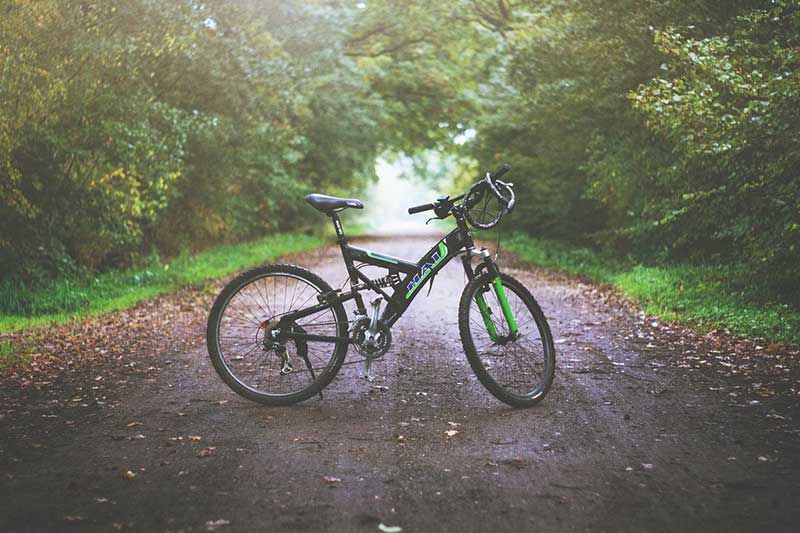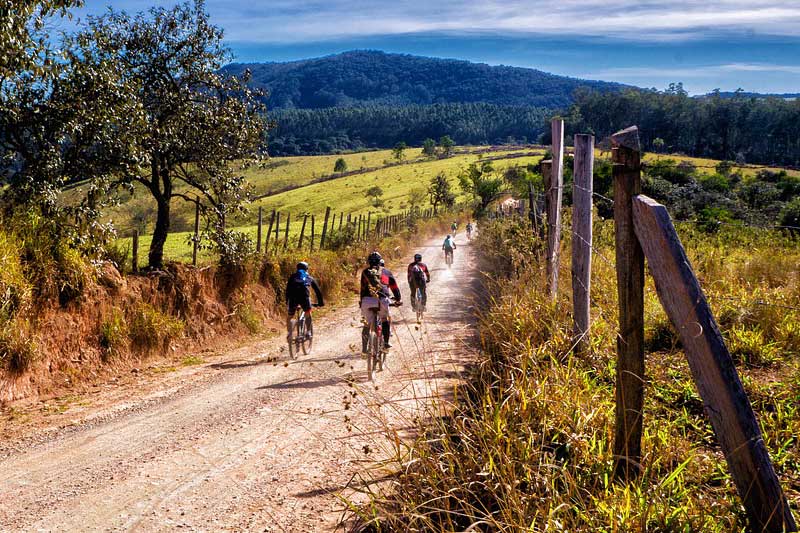Even the name mountain bike sounds intimidating. How can a bicycle be easy to ride if there’s a mountain involved? Sure, biking along trails is great but you also want the bike to be able to cover roads and other paved surfaces. It might surprise you to learn that a mountain bike is designed to be easy to ride, even if you’re a beginner. It can also cover all types of surfaces.
Whether you’re still getting your balance or are interested in switching to a mountain bike, here’s everything you need to know.
Are mountain bikes harder to ride?
Mountain vs other types of bicycles
There are a few common types of bicycles that include:
- Mountain bikes
- Road bikes
- Hybrid & comfort bikes
Each of these bikes comes with pros and cons, whether your riding on or off-road. However, mountain bikes often come out ahead when you’re comparing ease of riding.
1. Road Bikes
With a lightweight frame and a riding position design to get the most power from your legs, you can almost feel like your flying on a road bike. The thin tires and tall wheels do give you speed, but it can also make the bike difficult to ride.
You might also need plenty of practice to control the bike. Road bikes aren’t always designed for comfort, and the lighter frame is more susceptible to damage than a mountain bike.
2. Hybrid & Comfort Bikes
Hybrid and comfort bikes share many of the same design qualities. However, there are also a few differences. Comfort bikes can tackle rough, rocky terrain, while hybrids do best on paved surfaces.
Both types are lightweight and durable. Your center of gravity is lower making these bikes comfortable to ride for long distances. Wider wheels and tires provide plenty of stability, but there are also downsides. The primary one, it can be difficult to produce more leg power in an upright sitting position. Not only do you lose speed, but it’s also tiring pedaling uphill or for long distances.
3. Mountain Bikes
The first aspect you’ll notice is the sturdy frame and components. It can make the bicycle look intimidating, but don’t worry. It only ensures that the bike can withstand rugged rides and daily wear and tear without breaking down.
Off-road trails aren’t the best to bike over, and the loose dirt and gravel can make it difficult for beginners. A mountain bike compensates for this with its frame geometry. The frame is designed to provide control and traction so you don’t have to worry about falling off the bike.
Other components on a mountain bike are also designed to provide you with absolute control. The more control you have, the easier it is to ride the bike. The 26” wheels provide stability, and the smaller size helps prevent leg fatigue when you’re pedaling uphill or over rough terrain.
The bike’s suspension ensures the tires stay in contact with the ground. With the fork and frame designed to absorb impact shock and wide wheel knobs for traction in dirt and mud, you’ll find that it’s easy to ride a mountain bike and stay in control.
What you need to know about riding a mountain bike – 3 tips
Whether it’s your first time on a mountain bike or you need a few pointers, here’s what you need to know to make your ride easy and safe.
1. Keep Your Body Loose
Don’t try and fight the bike on turns or lock your muscles into place. You have a job and so does the bike. Your role is to provide power, and the bike is to move over all types of terrain. Move with the bike, instead of trying to fight it.
2. Don’t Overuse the Brakes
It’s tempting to apply the brakes any time you think you’re going too fast. Sometimes, you do need to press the brakes for safety. For example, when you’re flying downhill, but you don’t stop too suddenly.
You want to gradually slow down. Stopping suddenly can make you lose control of the bicycle. Worse-case scenario, you could get thrown over the handlebars resulting in an injury. Your mountain bicycle came with powerful brakes that only need tapping to safely slow the bike down.
3. Use The Gears
Mountain bikes come with plenty of gears so you can easily tackle all types of terrain. Use the gears. It will make biking easier. There are gears for steep hills and loose dirt trails. You also have gears for downhill descents. Familiarizing yourself with the gears and knowing when to shift will make it easier to ride a mountain bike.
How to ride a mountain bike on the road
Mountain bikes are designed to provide you with a comfortable ride, no matter how bumpy the terrain. It’s also easy to control, thanks to shorter wheels and a sturdy suspension. While it’s great to get outside and away from civilization during your bike ride, you also want to ride around the neighborhood.
A mountain bike can handle paved surfaces and it’s still a breeze to ride. Mountain bikes are better equipped to tackle the bumps, potholes, and curbs that are common on roads and sidewalks. The same design that gives you comfort and control on trails, works on rough, bumpy paved surfaces.
You won’t feel every jostle when you’re riding, and you’ll also find that the bike is easy to control.
Conclusion
Mountain bikes can look intimidating, but riding one is a great outdoor activity anytime of year. They are designed to tackle off-road trails and provide a smooth ride on bumpy paved surfaces. While the bikes are designed for durability, they are also easy to control. Even if you’re used to beach cruisers and basic 10-speeds, you’ll still do fine on a mountain bike.
You might even find that it’s easier to ride a mountain bike due to it’s focus on control. Almost every component on a mountain bike is there to give the rider ultimate control over the bike’s handling. Whether you’re stopping on a downhill descent or riding through loose dirt, you will find it easy to keep your mountain bike under control.


